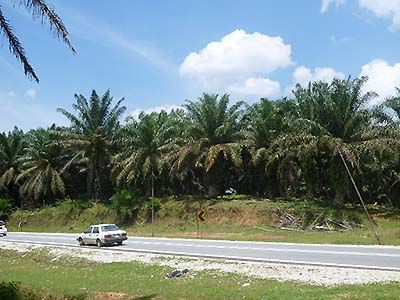Home > Research > Research Results > Research Results 2020 > Poverty reduction measures as an effective solution to deforestation in the tropics
Update:March 2, 2020
Main content starts here.
Poverty reduction measures as an effective solution to deforestation in the tropics
| Article title |
Poverty reduction saves forests sustainably: Lessons for deforestation policies |
|---|---|
| Author (affiliation) |
Motoe Miyamoto (a) (a) Department of Forest Policy and Economics, FFPRI, Tsukuba, Ibaraki, Japan. |
| Publication Journal |
World Development, 127, Elsevier, March 2020 DOI:10.1016/j.worlddev.2019.104746( External link ) |
| Content introduction |
Since solutions to tropical deforestation are important for both the alleviation of climate change and their contribution to the achievement of the United Nation’s (UN’s) Sustainable Development Goals (SDGs), measures toward achieving these are being actively implemented. However, concerns have been raised regarding these existing measures, in particular their high costs, low effectiveness, poor sustainability, and negative impact on local economies. These concerns appear to have manifested due to the fact that the underlying causes of deforestation have not been identified. Therefore, the identification of deforestation mechanisms and correspondingly appropriate and effective solutions continues to present challenges. This study examines the main factors influencing forest area change by combining the results of a multinational data analysis, a Malaysian socio-economic survey, and Indonesian household surveys on deforestation that were conducted between 1990 and 2014. This study reveals that poverty-related variables have a strong impact on forest area change, and thus poverty is the chief underlying cause of deforestation. The results also confirm that agricultural rent (i.e. the profitability of agricultural land) is the chief direct cause of deforestation. This study also provides evidence that when poverty is reduced considerably, and even if agricultural rent remains high, deforestation will be reduced. Furthermore, it is also shown that deforestation and its reduction can be explained as having their basis in three elements: poverty, agricultural rent, and forest scarcity. This study suggests that strategies that reduce poverty can be effective and sustainable measures for halting deforestation. These findings can contribute to the development of effective strategies to reduce deforestation in the tropics.
Photograph 1. Deforestation mainly results from the conversion of forests to agricultural land, particularly for export crops such as rubber, palm oil, cattle, soybean, and coffee. Forest conversion to agriculture has been found to be related to high agricultural rents (the profitability of agricultural lands). However, measures to decrease agricultural rent can negatively impact local economies and thus may be unsustainable. (left: oil palm plantation; right: rubber plantation).
Figure 1: Mechanisms of deforestation.
Figure 2: Mechanisms of deforestation reduction. |
Copyright © Forest Research and Management Organization. All rights reserved.




